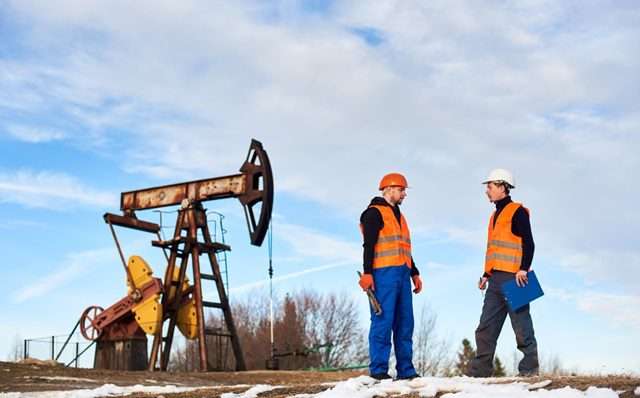The oil rig for offshore emergencies is one of the most demanding and hazardous assignments. This profession makes it essential for oil rig workers to be thoroughly prepared for any emergency condition. It is combined with the complex nature of the work, remote, and often brutal environment.
This article explores the critical aspects of equipping oil rig workers for offshore emergencies. Moreover, it will focus on training, equipment, and protocols to ensure safety and readiness.
Understanding Offshore Risks:
Oil rigs of offshore emergencies are exposed to various risks. These include extreme weather conditions, equipment malfunctions, or chemical spills. Moreover, the isolated location of the oil rigs makes a crisis response more challenging for fires, and explosions. So, preparedness involves a comprehensive approach to both preventive measures and effective emergency response strategies.
Comprehensive Training Programs:
Training is the cornerstone of preparedness for oil rig workers. It ensures that every worker knows how to react swiftly and efficiently in an emergency. Essential training programs include:
- Basic Offshore Safety Induction and Emergency Training: This emergency and safety practice covers basic safety, first aid, firefighting, and Helicopter Underwater Escape Training. This course is mandatory for all offshore workers.
- Advanced Safety Training: It includes further instruction in firefighting, survival techniques, and emergency response coordination. Workers learn how to manage more complex situations and support less experienced coworkers.
- Emergency Drills: Regular drills affect various offshore emergency scenarios such as blowouts, evacuations, and man-overboard situations. These drills ensure that all crew members can perform their duties under pressure and in coordination with each other.
- Medical Training: Given the remote location of oil rigs, workers should be trained in advanced first aid, CPR, and the use of automated external defibrillators (AEDs). Some crew members may also receive training as offshore physicians.
Essential Safety Equipment:
Equipping an oil rig with the necessary safety equipment is critical. It can ensure a swift and effective response to emergencies. Key items include:
Personal Protective Equipment:
Oil rig workers use personal protective equipment for offshore emergencies. These consist of safety boots, gloves, fire-resistant clothes, hard hats, and eye protective equipment. Every oil rig worker should have a personal survival suit in case of an offshore emergency.
Lifeboats and Life Rafts:
Properly sized lifeboats and life rafts are essential for offshore crises and maintenance. These should be equipped with emergency supplies, such as food, water, communication devices, and first aid kits.
Firefighting Equipment:
Firefighting equipment including fire extinguishers, hoses, and automated sprinkler systems are needed for oil rig workers. They should be familiar with the location and operation of all firefighting equipment.
Emergency Breathing Apparatus (EBA):
These are essential for providing breathable air in situations where the air quality is compromised, such as during a fire or gas leak.
Communication Devices:
Reliable communication systems are needed to maintain contact with each other and the emergency response team onshore. These include radios and satellite phones.
Emergency Protocols and Procedures:
Effective emergency management requires well-established protocols and processes. These should be documented and regularly reviewed. Key components include:
Emergency Response Plan:
It is a thorough plan needed to specify what steps should be taken in an offshore emergency. Communication procedures, evacuation routes, and muster locations all are covered in this strategy.
Incident Command Structure:
It is a clearly defined command structure that designates roles and responsibilities during an emergency. This ensures efficient coordination and decision-making.
Regular Inspection and Maintenance:
This procedure includes Supervision and review of routine checks and maintenance of all safety equipment and emergency systems to ensure they’re in good working order. This includes testing alarms, fire suppression systems, and emergency lighting.
Reporting and Debriefing:
Procedures for reporting incidents and conducting debriefs after drills or actual emergencies. This helps to identify areas for improvement and reinforces learning.
Psychological Preparedness:
The psychological health of workers is as important as their physical safety. High-stress environments can take a toll on mental health. It might be affecting performance during emergencies. Strategies to support psychological preparedness include:
- Mental Health Training: It is a health programs that focus on stress management, resilience, and coping strategies.
- Support Systems: This technique helps workers to manage stress and anxiety through counseling services and peer support networks.
- Regular Breaks and Rotations: This schedule ensures a high level of alertness for all employees after receiving enough rest and rotating their tasks to avoid burnout.
- Survival Pack Kit: Having a survival pack kit on hand can provide peace of mind as you know that you’ll have everything you need should a disaster happen.
Final Thoughts:
Equipping oil rig workers for offshore emergencies involves a diverse strategy and commitment. It covers rigorous training, essential safety equipment, well-defined protocols, and psychological support. By prioritizing all these elements, oil companies can ensure the preparedness of their workers to handle emergencies effectively. Moreover, they can minimize risks and enhance overall safety.
In this demanding field, continuous improvement and regular updates to training programs, equipment, and procedures are essential. It can help to adapt to new challenges and maintain a high standard of preparedness.

